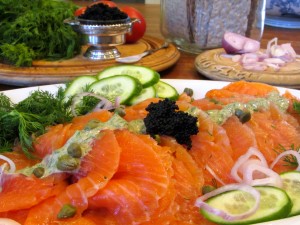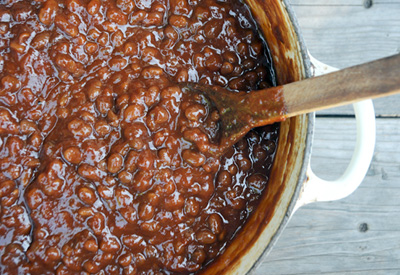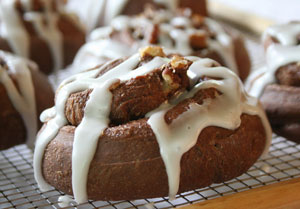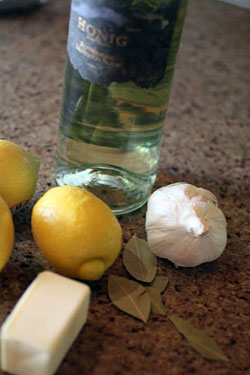 Once in a great while, I come across a spectacular dish that needs little tinkering because it’s already perfectly healthy and incredibly easy like Swedish Gravlax with Mustard Dill Sauce.
Once in a great while, I come across a spectacular dish that needs little tinkering because it’s already perfectly healthy and incredibly easy like Swedish Gravlax with Mustard Dill Sauce.
Not the same as the smoked salmon you’d find in a grocery store, but similar to traditional lox you sometimes find in a kosher deli, gravlax is “cold-cured” in salt and sugar. But with the additional seasonings of fresh dill and Aquavit (a Scandinavian alcohol flavored with caraway and other herbs and spices), it has a uniquely delicious taste that somehow makes it more “special” than any deli breakfast food. (That hint of “specialness” may also be because a gravlax appetizer in a restaurant like Marcus Samuelsson’s Aquavit in New York will run you 20 bucks…)
So when in Stockholm for the husband’s “Jack Reacher” premier in December, I was thrilled to see gravlax (or gravad lox) show up at every meal.

 I've loved peanut butter sandwiches as long as I can remember. And I don't know anyone who hasn't eaten them as kids or even adults. Most people owe their school lunches to peanut butter and jelly. But somewhere down the line I had lost my interest in the sandwich and peanut butter in general.
I've loved peanut butter sandwiches as long as I can remember. And I don't know anyone who hasn't eaten them as kids or even adults. Most people owe their school lunches to peanut butter and jelly. But somewhere down the line I had lost my interest in the sandwich and peanut butter in general. When ever we go out for barbque, I always, choose baked beans as one of my sides. There is something so satisfying and so comforting in eating a dish like this along with my tri-tip sandwich and a double portion of asian slaw.
When ever we go out for barbque, I always, choose baked beans as one of my sides. There is something so satisfying and so comforting in eating a dish like this along with my tri-tip sandwich and a double portion of asian slaw. I'm still rolling through my office, trying to organize every inch of it, with the help of my friend, the professional organizer. We're making great progress. Tops of my desks have stayed mostly clear. My files are filling up. I'm finally seeing blank space on the shelves in my storage closet, the result of some purging.
I'm still rolling through my office, trying to organize every inch of it, with the help of my friend, the professional organizer. We're making great progress. Tops of my desks have stayed mostly clear. My files are filling up. I'm finally seeing blank space on the shelves in my storage closet, the result of some purging.

